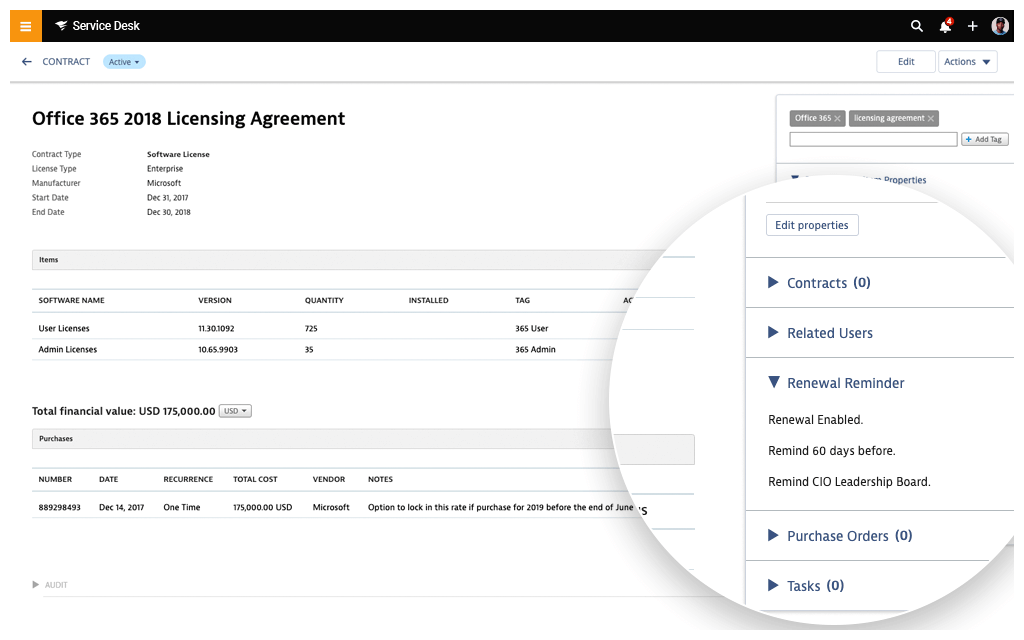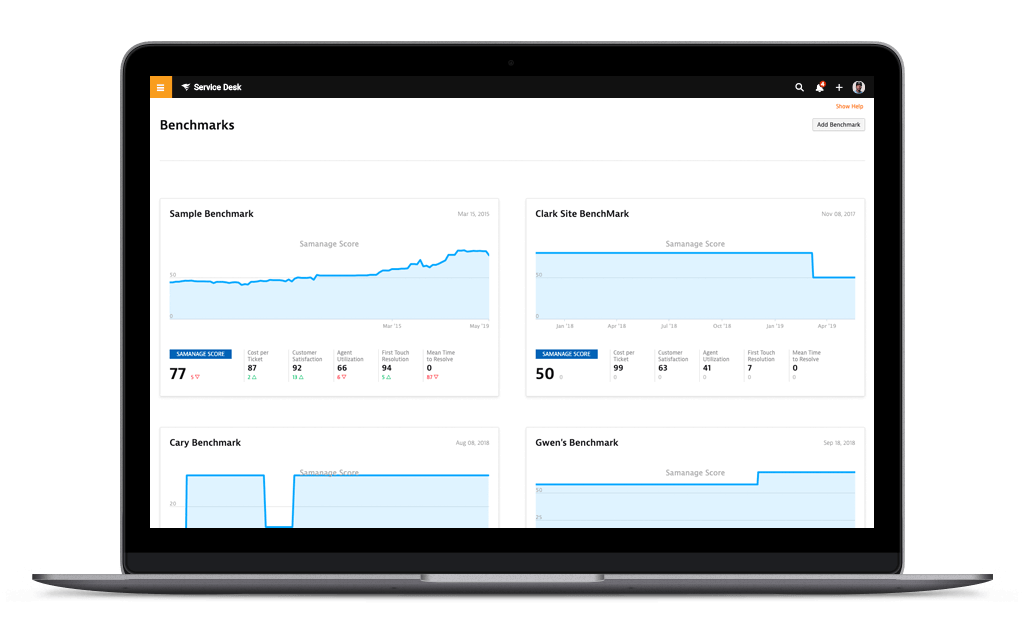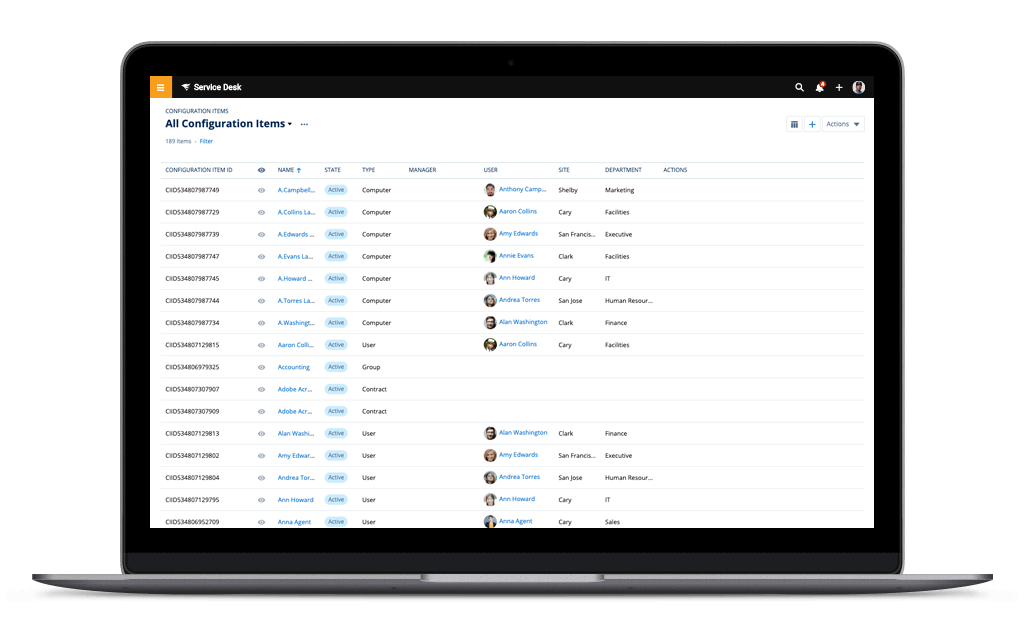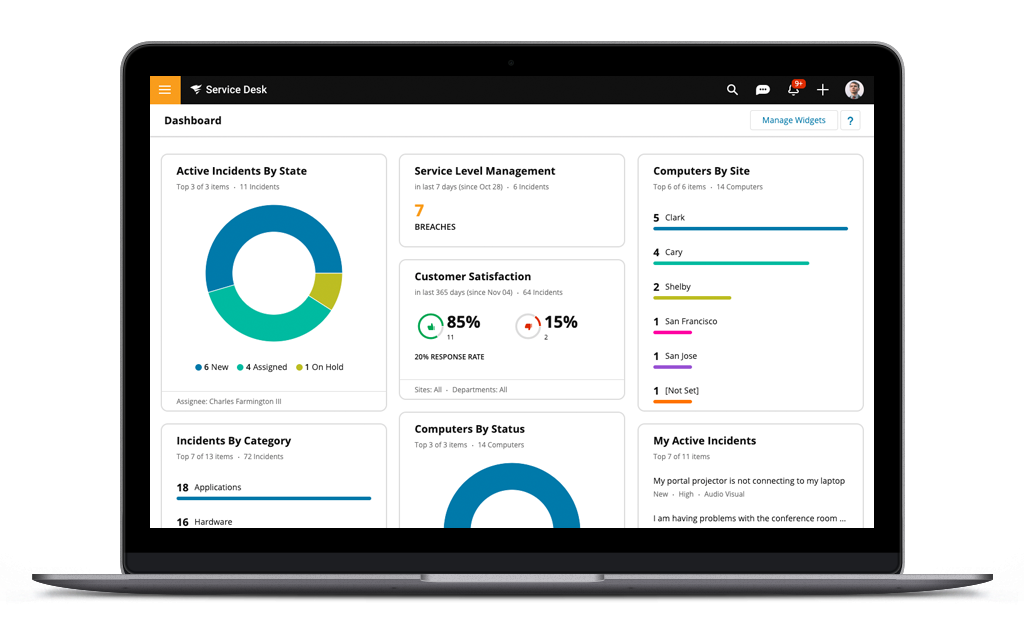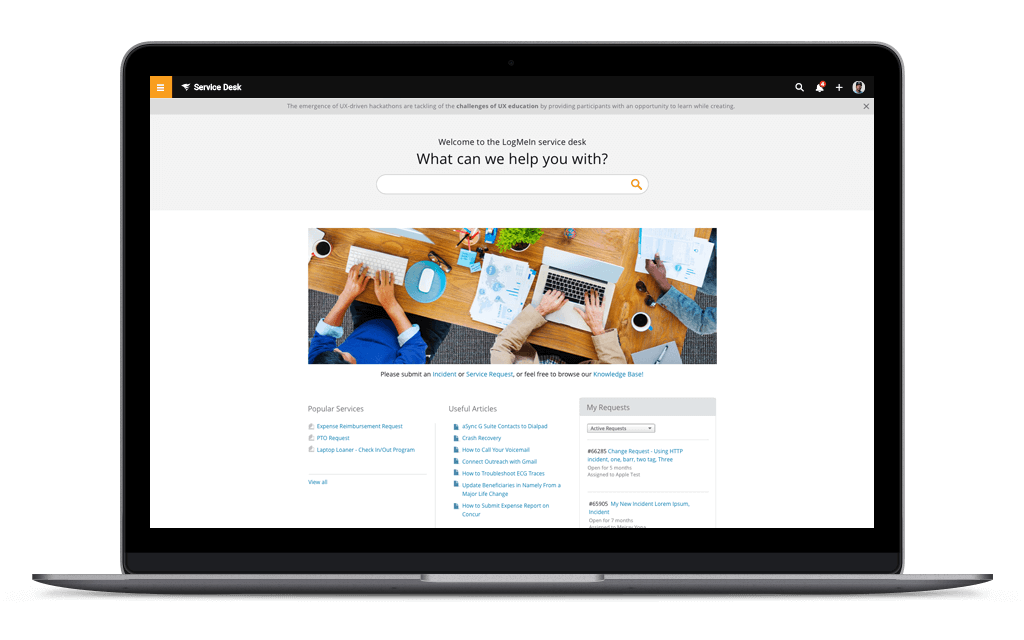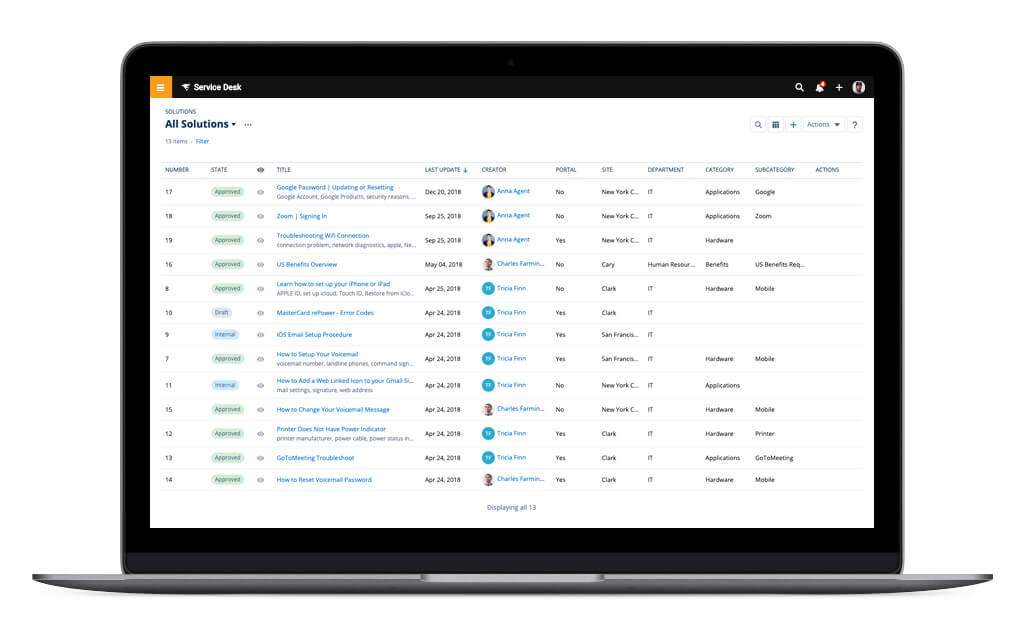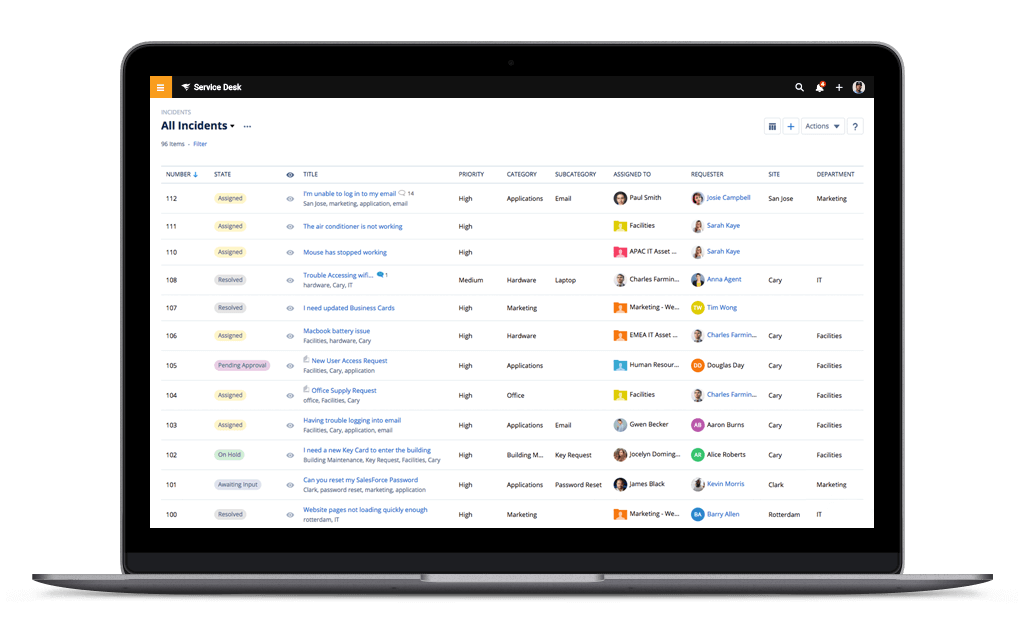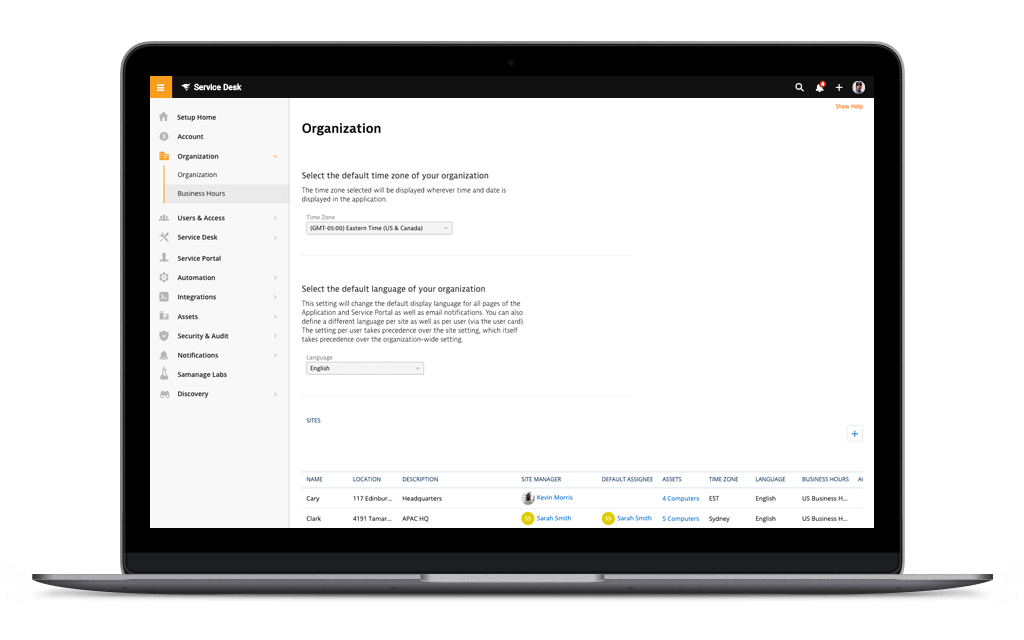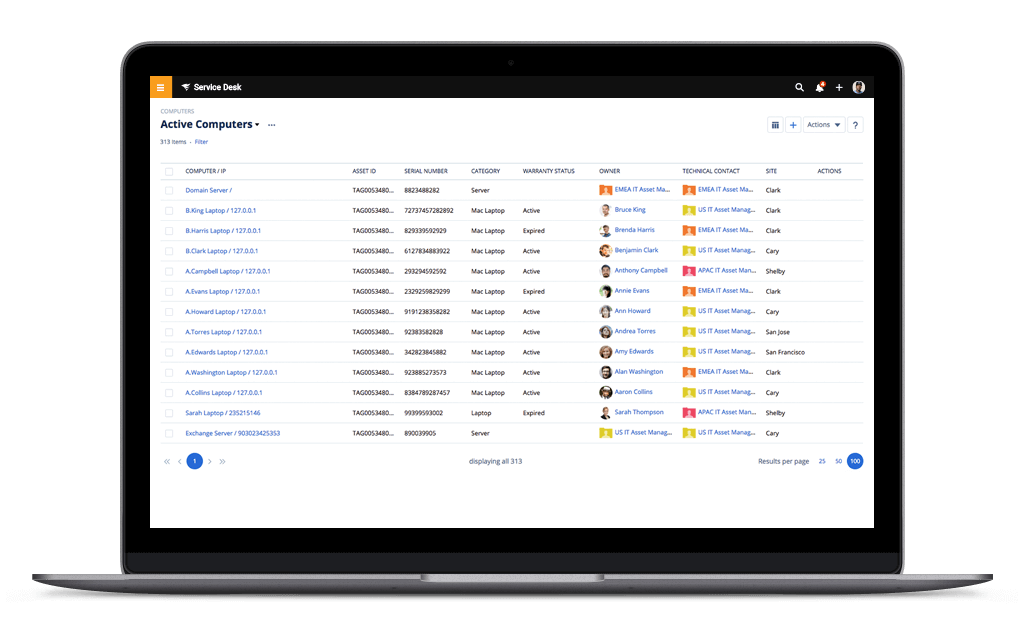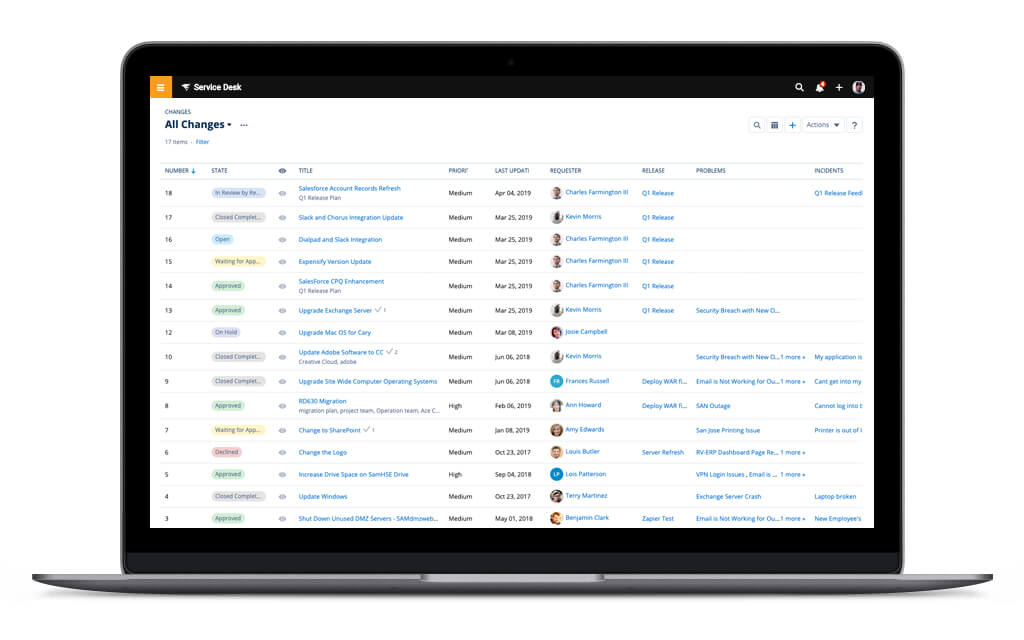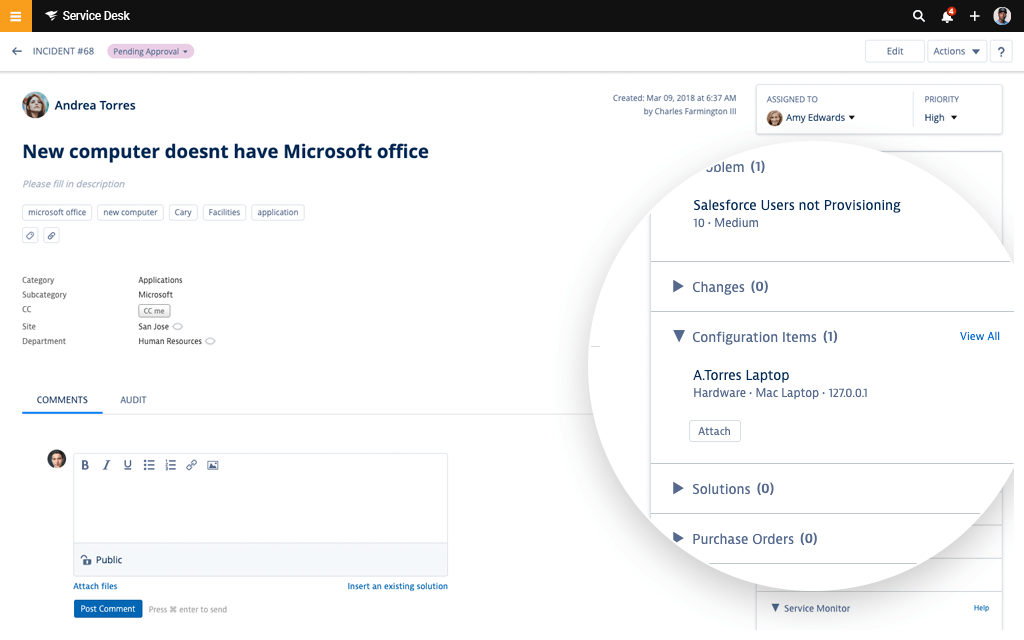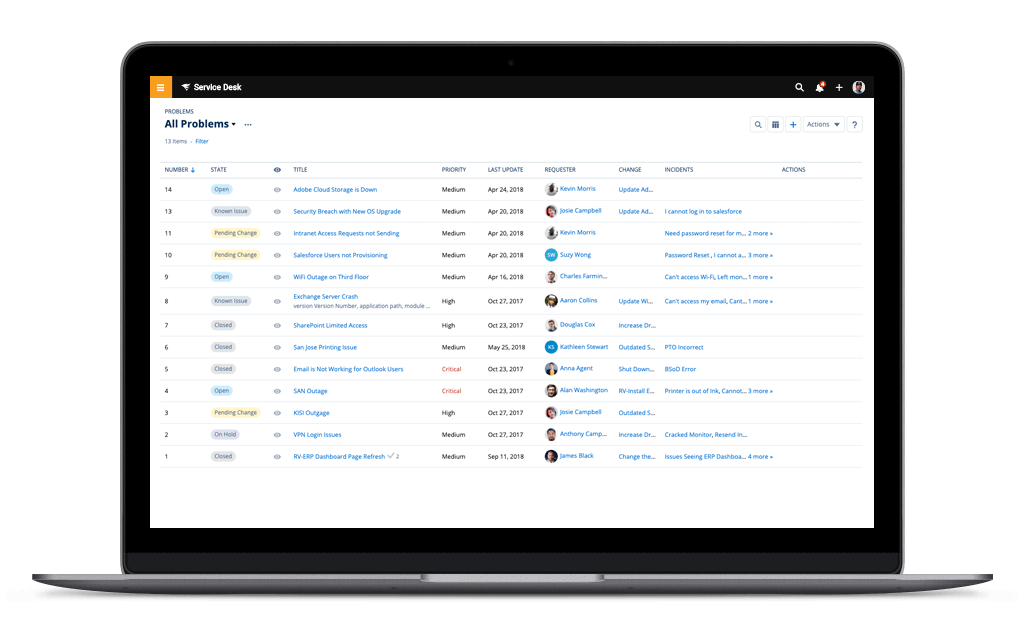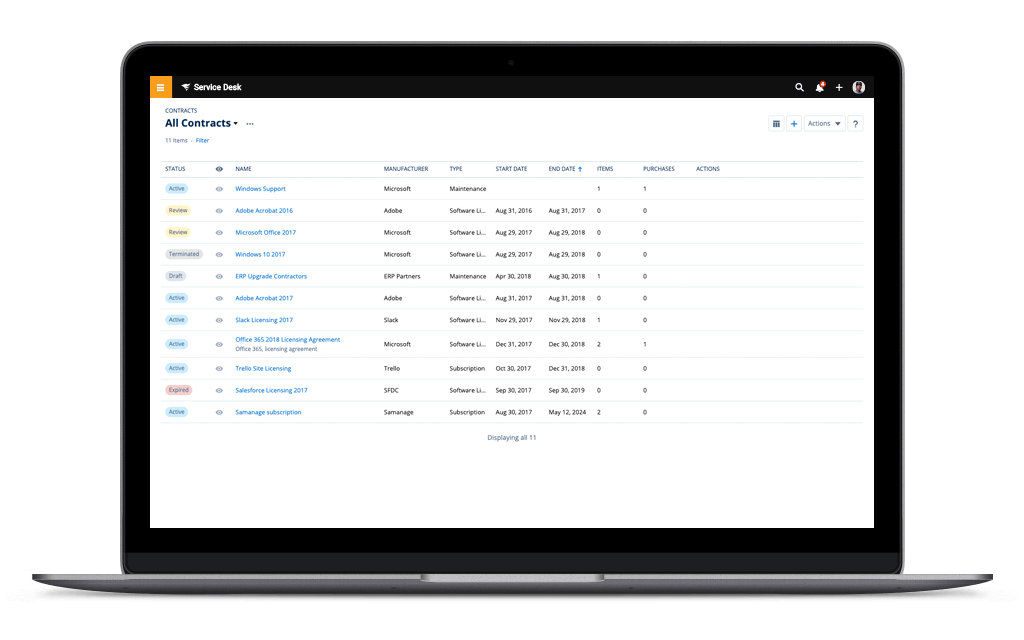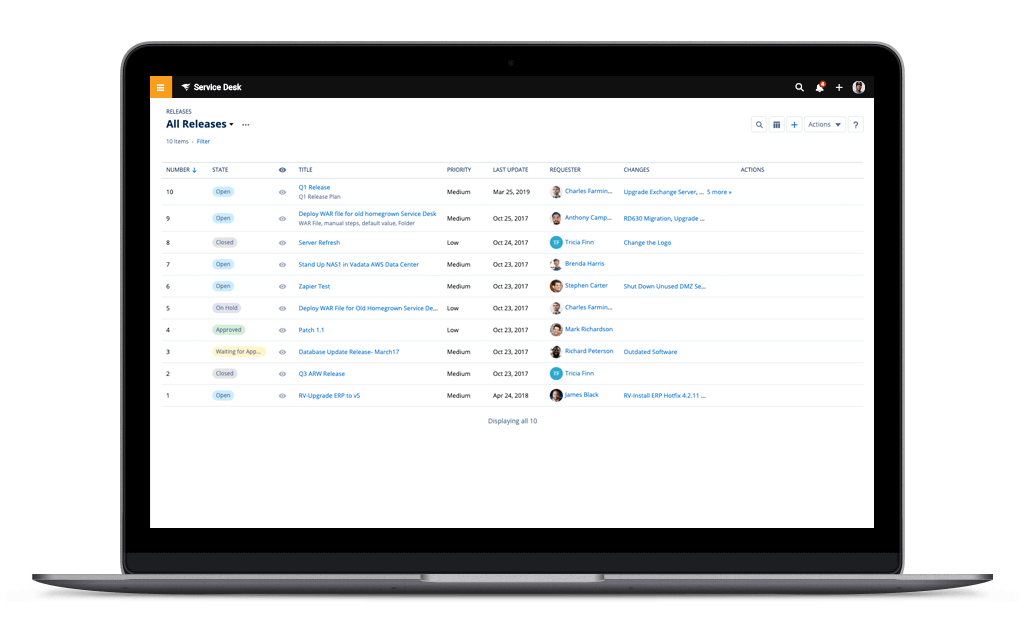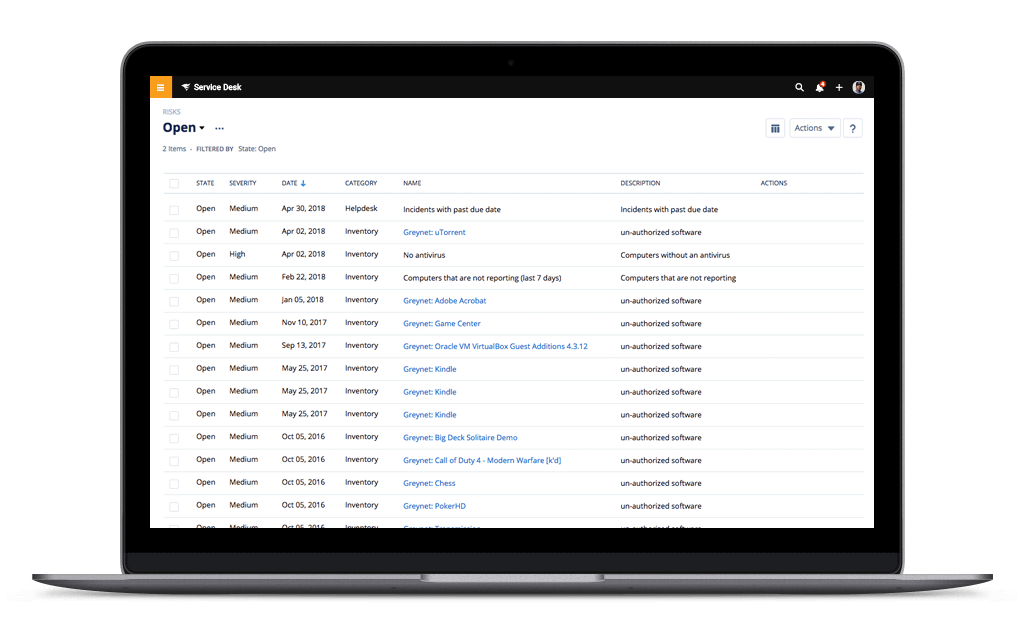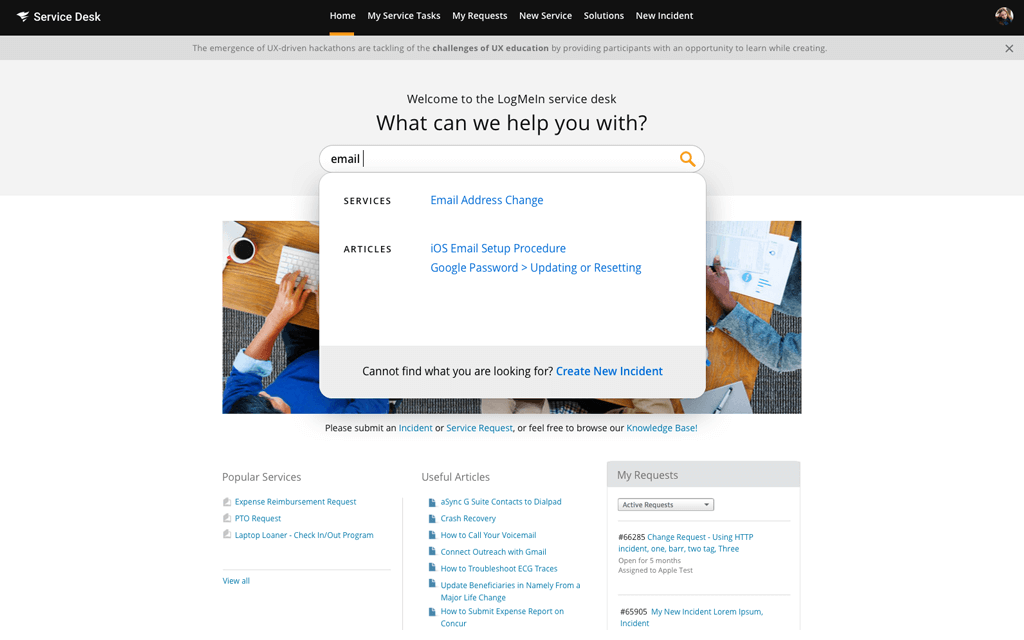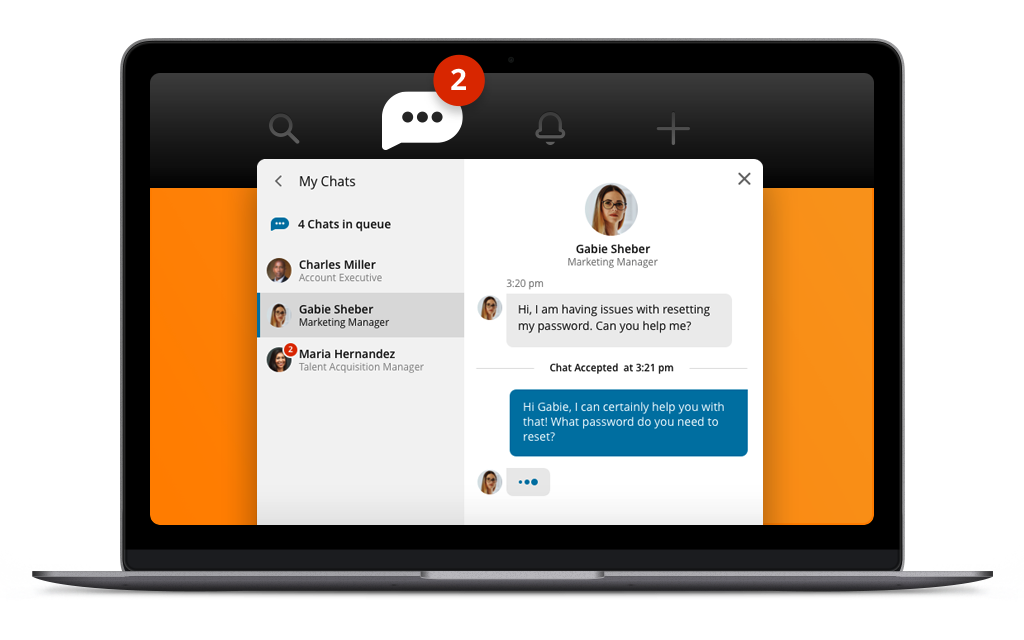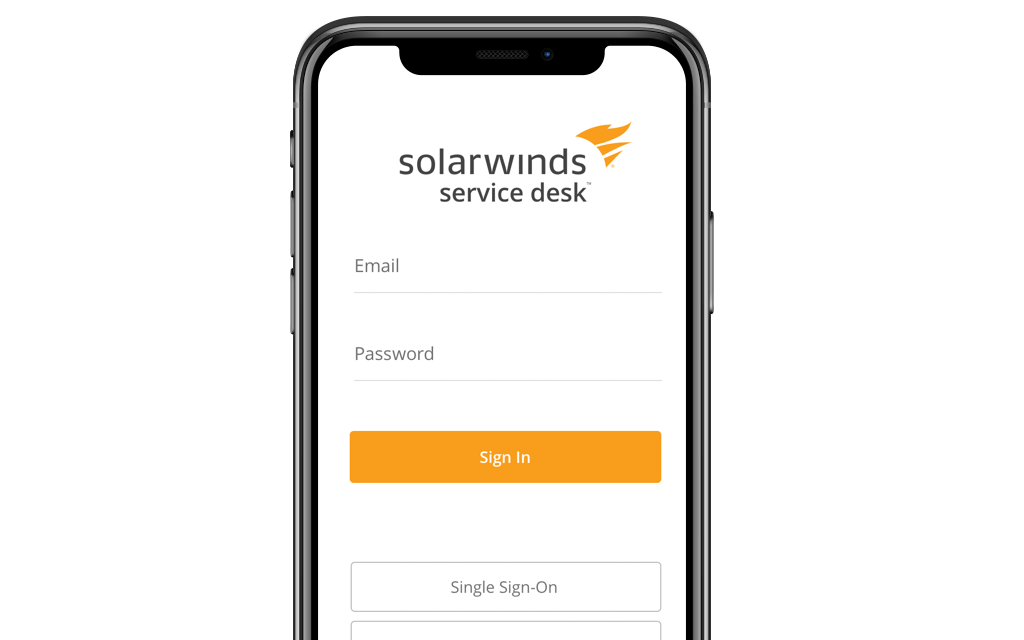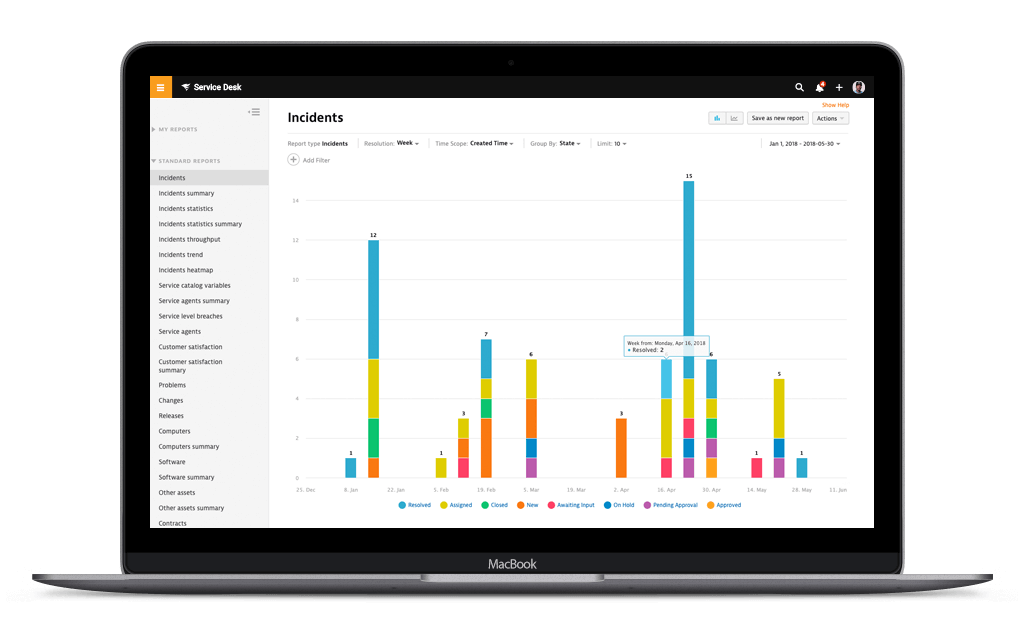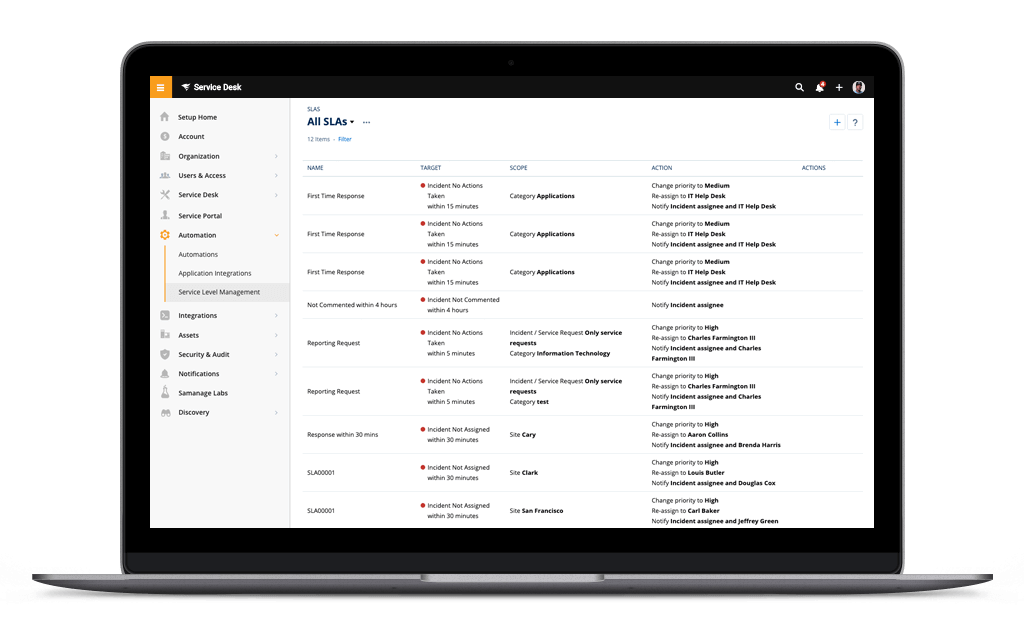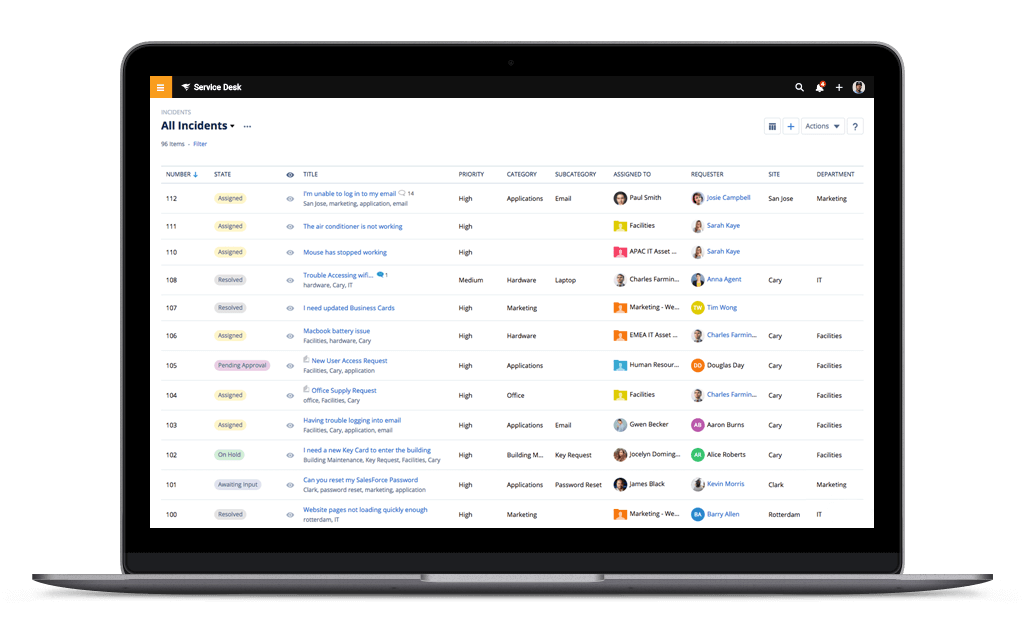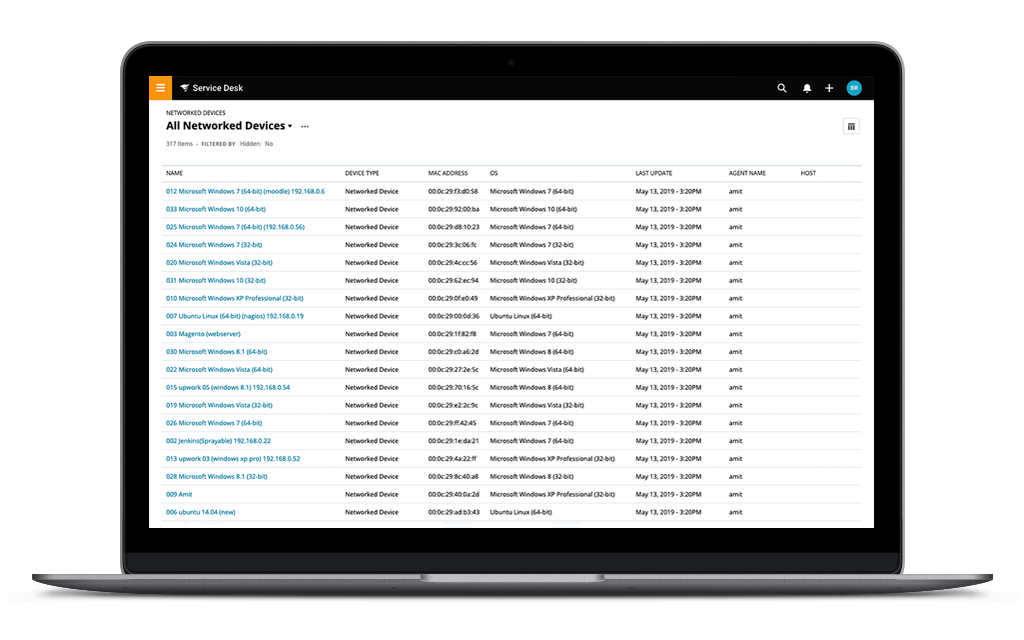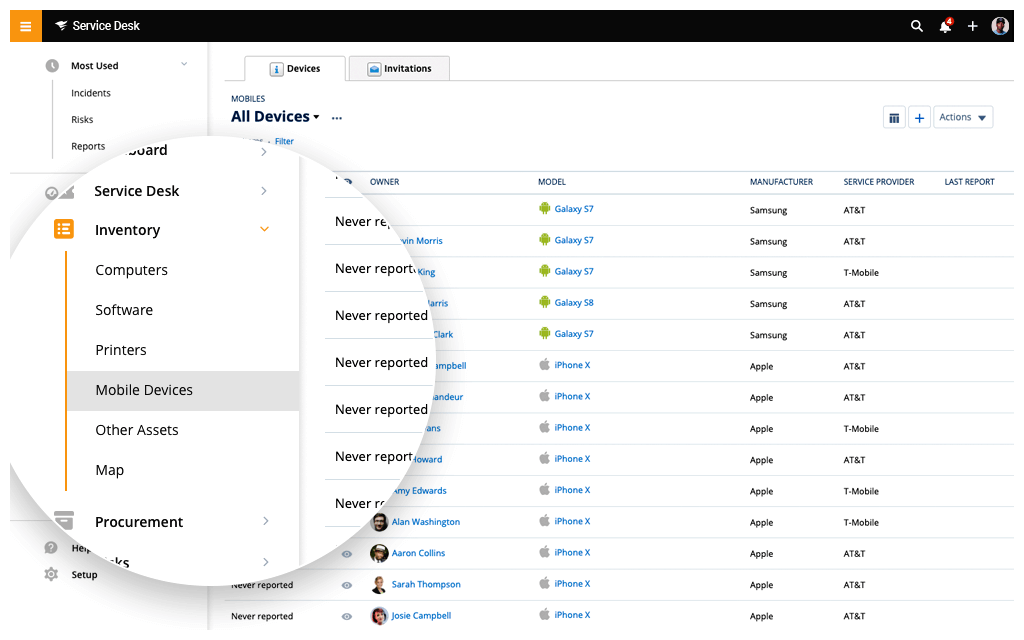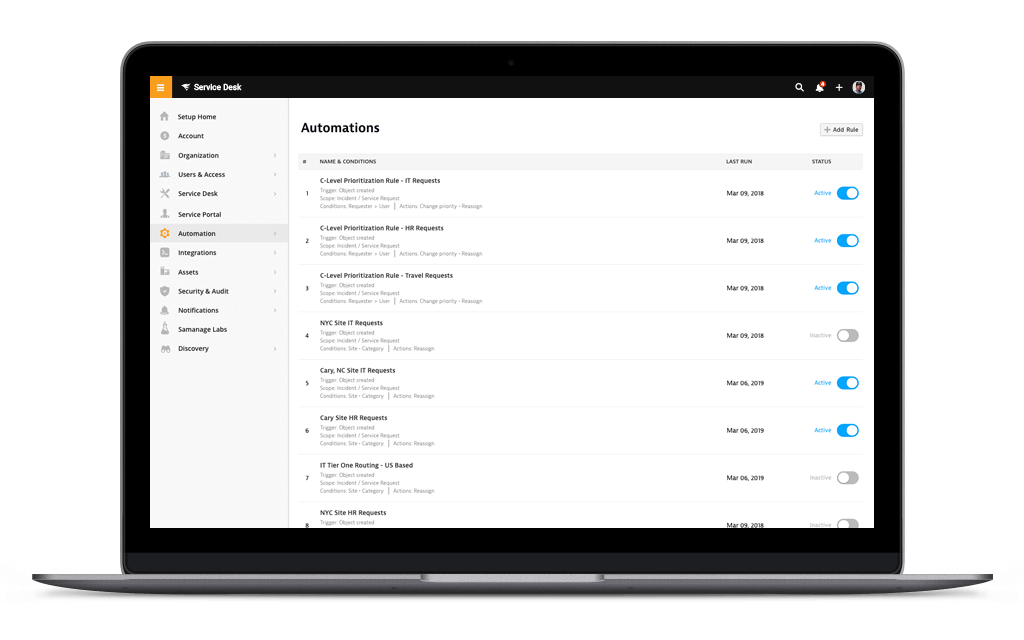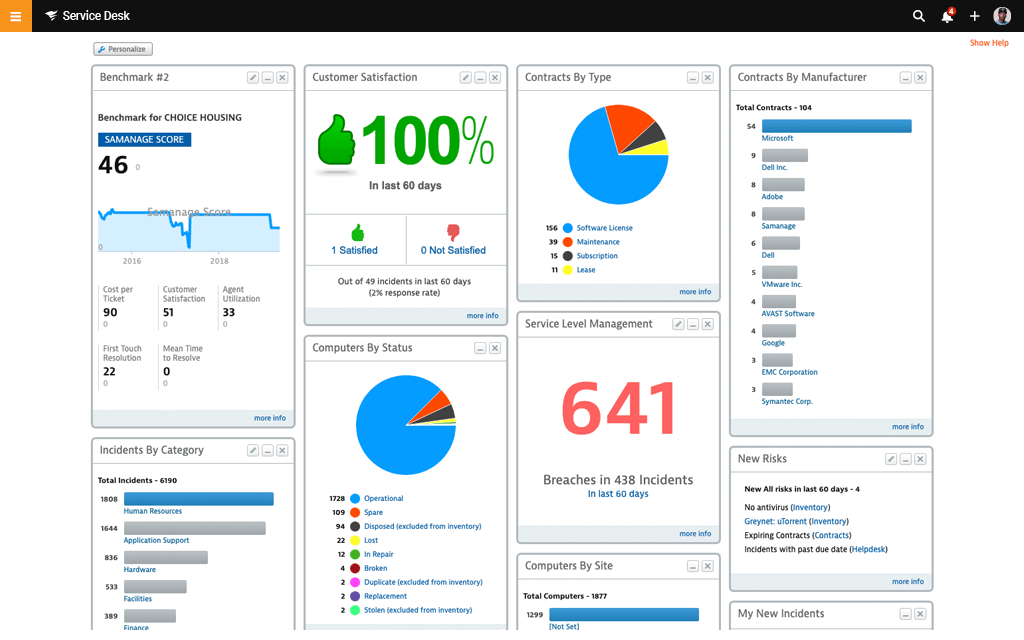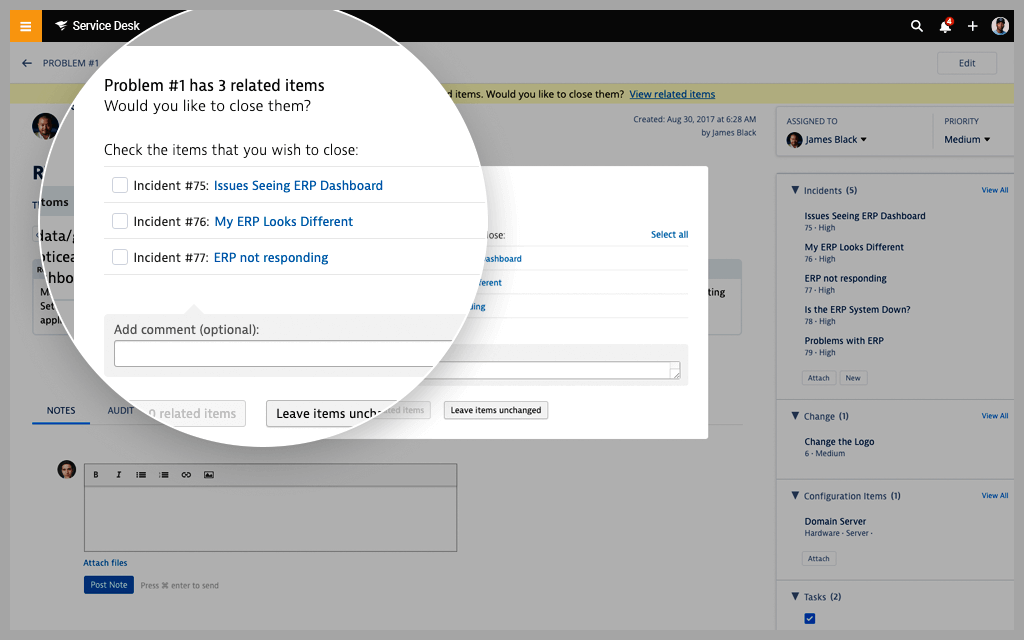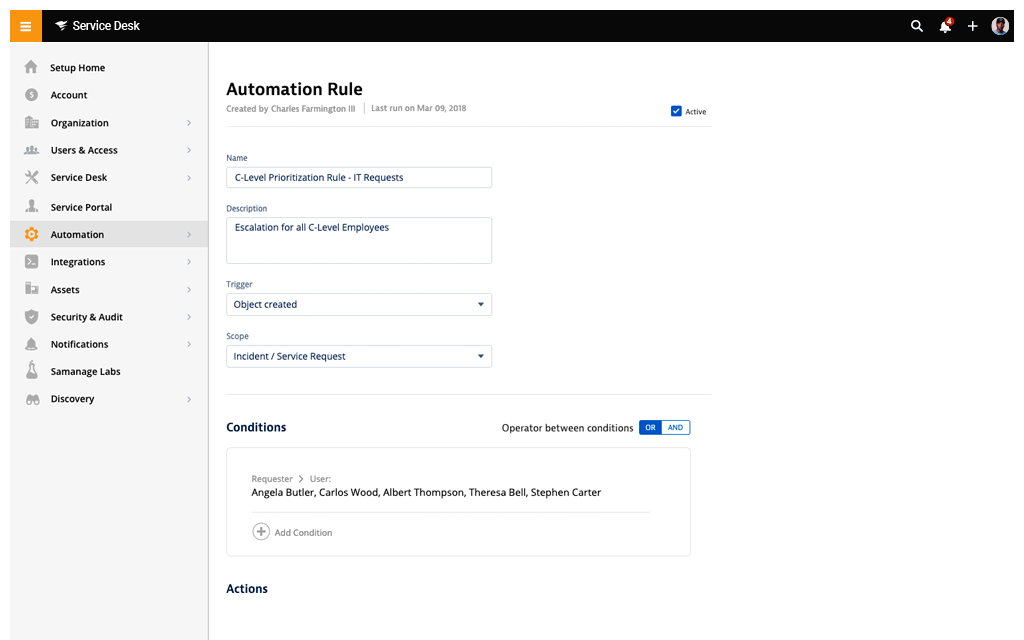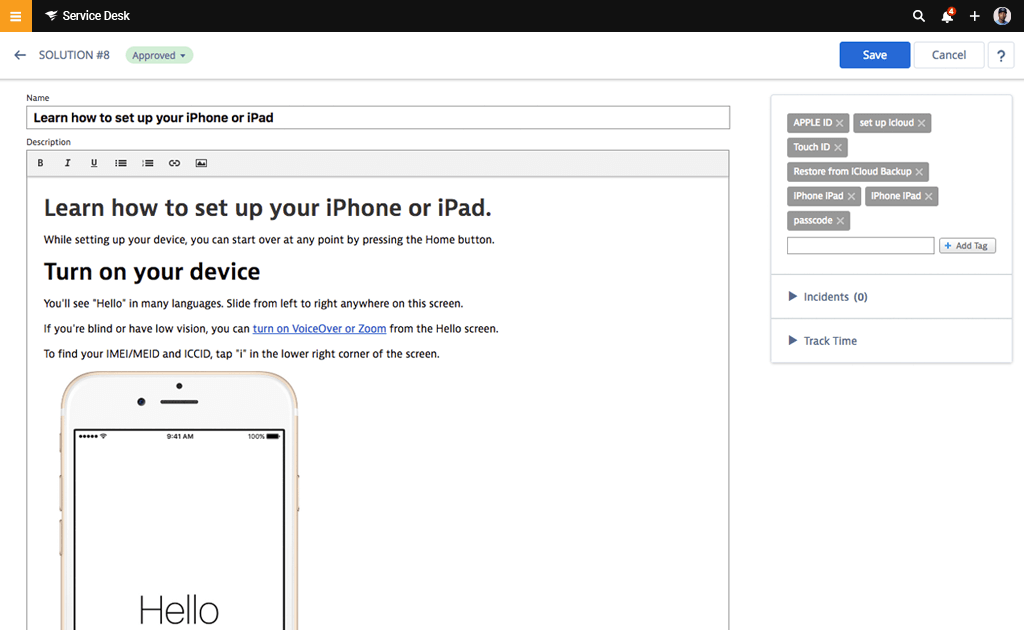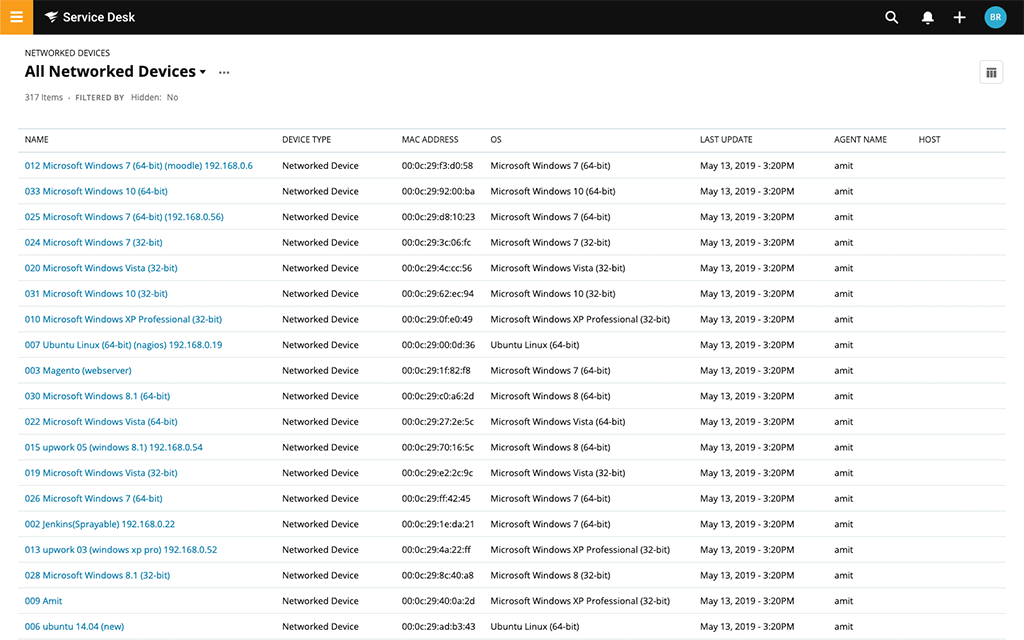
Solarwinds Service Desk
A modern IT service management (ITSM) solution to eliminate barriers to employee support services
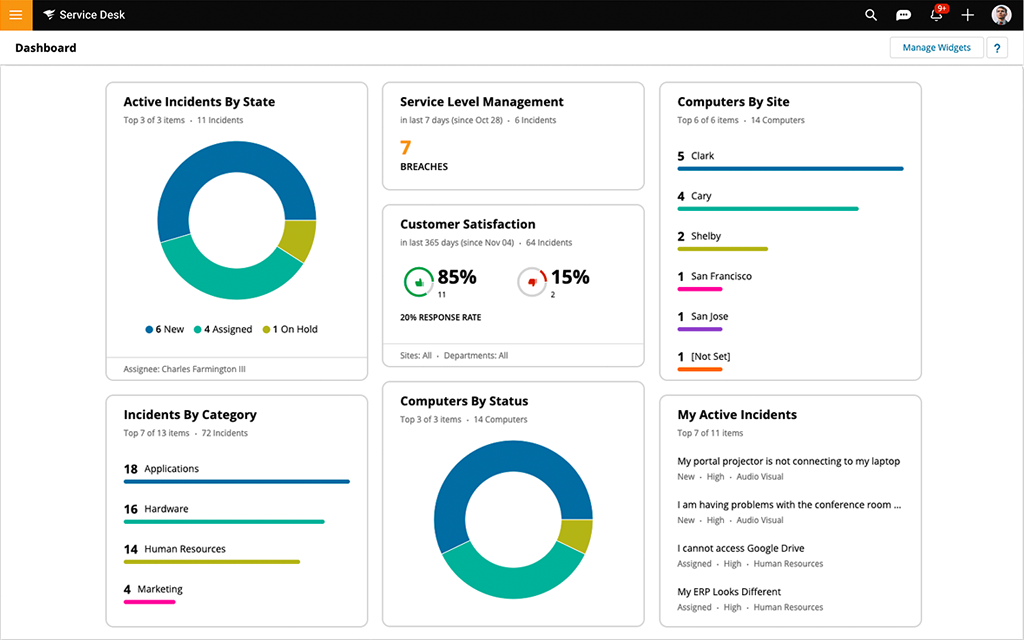
Overview:
SolarWinds Service Desk is a cloud-based service management solution built to streamline the way you provide support and deliver services to your organization. Whether you have a small IT operation with basic IT ticketing needs or a large enterprise with a complex IT infrastructure and mature processes, SolarWinds Service Desk is designed to meet your current needs with the flexibility to scale and support your future business requirements.
A Complete Service Management Platform
- A single platform for service management, IT asset management, configuration management, and much more.
- ITIL-ready service desk complete with Incident, Problem, Change, and Release Management capabilities.
- Advanced reporting modules to analyze trends, monitor service quality, and continuously improve service management processes.
A Service Desk for the Digital Age
- Enhance agent and employee productivity with native artificial intelligence (AI) and machine learning technologies.
- Manage your organization’s processes, automate repetitive tasks, and drive greater service efficiency with robust automation and workflow engines.
- Drive agent productivity with a user experience designed based on research and analysis of how agents actually work.
Provide Your Employees with the Experience They Deserve
- Give your employees the flexibility to submit tickets and make requests via email, phone, walk-ups, or a customizable service portal.
- Manage and measure your Service Level Agreements (SLAs) and Customer Satisfaction (CSAT), highlighting opportunities to improve the overall employee experience.
- Scale the SolarWinds Service Desk across personnel, sites, and departments to provide consistent standards of employee service throughout your organization.
An Easier Service Desk to Manage
- Experience scalability and industry leading 99.999% system uptime with SolarWinds Service Desk, which leverages the power of Amazon Web Services (AWS) data centers.
- Implement the application in a matter of days or weeks with intuitive setup options, and 100% configurable (no-code) changes to meet your business needs.
- Skip the costly and time-consuming upgrade cycles. Our multi-tenant, cloudbased architecture allows continuous deployment of new and enhanced functionality, meaning you are on the latest and greatest version.
Features:
Core Service Desk Functionality
- PinkVERIFY™ Certified ITIL-Ready Service Desk: Complete with Incident, Problem, Change, and Release Management modules, SolarWinds Service Desk has configurable page layouts to support your organization’s unique service management processes.
- Employee Service Portal: Customize the service experience for employees when submitting tickets and requests by giving them access to knowledge base resources and the ability to view company wide announcements.
- Service Level Management: Provide transparency and meet the expectations of your organization by building your SLA policies directly into your service desk, including auto-escalation rules.
- Knowledge Management: Reduce resolution times and increase case deflections by offering your employees access to a knowledge base of articles.
- Agent Mobile App: Access core service desk functionality directly on your Android or iOS devices from wherever you may be.
- Integrations: With hundreds of out-of-the-box integrations and an open REST API, your service desk has the ability to plug into business workflows across the systems supporting your organization.
Process Automation and Artificial Intelligence
- Request Management and Service Catalog: Formalize the services you provide by building dynamic submission forms accompanied by a workflow engine that can help to streamline the fulfillment processes.
- Artificial Intelligence (AI): Increase the efficiency of your service desk by utilizing out-of-the-box AI technology.
- Get tickets to the right teams quickly through AI guided ticket routing.
- Reduce resolution times by suggesting applicable knowledge articles for inbound tickets.
- Deflect ticket creation with an AI guided Service Portal experience, driving employees to the most applicable resources and answers.
- Process Automation: Reduce the manual processes that can cause bottlenecks in your service delivery by building custom automation rules to route, assign, prioritize, and categorize your inbound tickets.
Reporting and Analytics
- Dashboards: Get a real-time snapshot of your service desk KPIs through the set of easily configurable widgets.
- Reports: Visualize your service desk data to analyze trends, view agent performance metrics, and gather the insights needed to make future decisions through dozens of out-of-the-box and customizable reports, including trend reports, incident throughput, CSAT scores, and SLA breaches.
Employee Service Management
- Expanding Beyond IT: Build a one-stop shop for the services provided by the various departments in your organization. The department-specific layouts can extend your service desk to Human Resources, Facilities, Shared Services, Procurement/Finance, Legal, and other departments providing services to employees.
- Inter-Departmental Workflows: Collaborate across departments to help remove barriers that slow down service delivery by utilizing the service catalog to automate tasks and approvals, while reducing fulfillment times on complex inter-departmental services.
IT Asset Management and Configuration Management
Utilize SolarWinds Discovery to consolidate a complete and accurate database of hardware and software assets directly within your service desk.
- IT Asset Management: Collect full asset lifecycle management and audit history of your devices, view your complete inventory, receive automatic risk notifications helping you to address potential impacts to your devices, and run software compliance reports to avoid costly true-up fees.
- Configuration Management: Keep your SolarWinds Configuration Management Database (CMDB) fully updated, so that you can quickly diagnose and resolve issues, while reducing impacts when changes are made to your infrastructure.
- Procurement Management: Align your assets with native contract, purchase order, and vendor management capabilities.
Screenshots:
Be Prepared for Microsoft License Auditing
Make it easier to prepare for a potential Microsoft license audit with automatic software inventory updates.
Incident Management Software
Deliver world class service to your employees so they’re more productive.
Internationalization and Localization
Support for more than 40 languages. Customize by location and view ticketing trends at a global level.
Problem Management Software
Escalate issues through your internal ITIL framework and processes to resolve them quickly.
Procurement Tools
Keep track of all your licensing, maintenance, and subscription details in a single location.
Service Desk Best Practices
Learn best practices for using a service desk solution to optimize and streamline your organization’s processes.
Service Desk Reporting
Reporting capabilities that allow you to quickly identify areas for continued improvement.
Software License Management
Manage your software purchases and align the software titles loaded on your devices.
System Requirements:
| SolarWinds Service Desk | |
|---|---|
| Supported Browser Versions* | Google Chrome Mozilla Firefox Safari Internet Explorer (Version 11 or newer) |
*Tested browsers listed. If your browser is not listed, please reach out to support to check if your browser is compatible.
What’s the difference between help desk and service desk?
When it comes to help desk vs. service desk, there are definite similarities. However, under the ITIL framework, the two are different. The first important distinction when considering the difference between help desk and service desk is its focus. The IT help desk is end-user focused. The IT service desk, on the other hand, is both end-user-focused and internally focused.
The help desk deals with individual user questions, issues, and problems under the purview of the service desk. The help desk works for ticket resolution. In other words, IT help desks are tactical because they’re in place to solve problems as they arise. The help desk troubleshoots or resolves the issue for the user then closes the ticket, thus ending their responsibility in the matter.
The service desk isn't just a renamed help desk, but rather acts as a point of contact for service requests, problem management, and configuration changes. The service desk is more focused on enabling business processes and providing integrated support for business impact with a focus on more formalized integrated business processes. The service desk also adapts to changing needs in the workplace and helps the help desk adapt, too.
Larger companies with lots of users and a complex IT infrastructure need both a help desk to address individual user issues and an all-encompassing service desk to oversee the lay of the land.
What is the IT service desk?
The IT service desk has an overarching goal of improving IT processes, monitoring and assessing current processes and trends, and looking for opportunities for IT processes to run more efficiently. The goal of the IT service desk is to restore the end user to productivity, using problem resolution, end-user education, or sometimes generating a workaround. To do this optimally, it has to understand the end-user experience and meet the end user where they are technologically.
The IT service desk is responsible for tracking tickets and identifying recurring issues and problems that need to be resolved once and for all. And, by keeping services up to date with current technologies, the service desk assures services work properly.
As the service desk becomes more integrated with overall business practices, service desk software has had to learn to integrate nicely with other software used throughout the enterprise.
Where are all these tickets coming from?
In any business, there are many different types of service desk requests, each of which must be handled in a specific way. Employees can’t spend time refreshing email and waiting for a response to a service desk ticket critical to their business productivity.
It’s important to source every ticket or incident to an origin, including the portal, chat, email, API call, or manual entry by a technician. With SolarWinds Service Desk, you have one place to streamline and organize the tickets and requests coming in through different mediums, including email, phone calls, a customized Service Portal, and even the occasional (or extremely frequent) walk up.
How do I relate tickets to see if I have a problem?
Sometimes the service desk (or service desk software) notes several incidents of the same nature in different departments that keep repeating despite troubleshooting. IT logs problems, categorizes them, and prioritizes them. They investigate and diagnose and develop a workaround. Service desk software should provide a robust ticketing system, with automation in place to speed up the identification, logging, categorization, prioritization, and diagnosis of problems.
Problems are IT's long-term pains and “hard-to-diagnose” challenges. They can be long-term conundrums without clear answers, and sometimes, no one is 100 percent sure who's in charge of fixing them. Good problem management, however, prevents many incidents, and a service desk software should equip you to address both.
SolarWinds Service Desk can help you follow ITIL best practices with escalation of incidents built in to the service desk, so a ticket can quickly move to a potential problem or be associated to an upcoming change or release.
How do I route service tickets to the right personnel or teams?
Many departments may have their own internal processes, how-to documentation, and other resources, but these can be difficult to manage and difficult for employees to access if not centralized in a single platform. Streamline ticket routing by building the rules in your SolarWinds Service Desk to get tickets and requests to the right individuals and teams quickly. This removes ticket routing bottlenecks, resolving tickets and requests faster.
Maybe your organization has different incident management protocols based on the category (or department) the ticket originates. Route tickets by categories such as application support, hardware support, HR or benefits, or facility requests to make sure your ticket isn’t spending time going through the wrong channels. Get it to where it needs to be immediately.
Automated routing, ticket escalations, status updates, workflows, approval notifications, and SLA breach protocols have proven valuable in IT. If there’s any scenario where “if a, then b” should always be true, you can create a ticket automation rule to get the ticket into the right hands for efficient and fast support.
How do I use the knowledge base to increase self-service?
The knowledge base helps cut down time wasted on repetitive tickets, which is a huge benefit to service providers. Whether it’s a password reset, a change to a 401(k) contribution, or a request to book a conference room, your organization can create a knowledge database within your service desk to answer questions. When repeat questions come in, there’s no need to retype the solution over and over again; just point, click, and send a solutions article. When an article needs an update, you can grant service providers the ability to submit changes for approval.
Fully customize your SolarWinds Service Desk knowledge base with step-by-step articles and tutorials, including images, videos, and links. This smart tech can empower both your employees to resolve tickets on their own or give your IT pros quick articles to send out at the click of a button.
Give your employees complete transparency into the status of their tickets and requests. Through the SolarWinds Service Desk employee service portal (or email), your employees can comment on tickets and participate in the resolution by completing approvals and tasks associated to their requests.
How do I attach service tickets to IT assets?
In today’s environment, IT asset management and service desk should live in a unified state. Employees and their assets are attached from the day they begin work at your organization, and the data from both can easily help connect you to their needs quickly. Practically every ticket or request involves a user and one of their devices. Often, the issue will involve an application, software, or tool. By attaching all this data in one solution, you can easily connect employees with self-service, better plan for changes, and deliver faster solutions.
By unifying service desk and IT asset management (ITAM) capabilities, your organization can take a more comprehensive approach to tracking technology investments to incorporate service and repair activities into each asset’s history. Fully integrated IT asset management capabilities allow you to capture over 200 data points and continually monitor your computer and server inventory within the SolarWinds Service Desk, and gain a consolidated view on what’s loaded on the devices, who owns them, and where they’re located.
SolarWinds Discovery integrates with Service Desk and gives IT pros a complete and accurate picture of their software and hardware infrastructure. These insights allow you to proactively address potential risks to IT services availability.
Documentation:
Download the Solarwinds Service Desk Datasheet (.PDF)
Get in touch with a Solarwinds Solutions Specialist today to Learn More!

